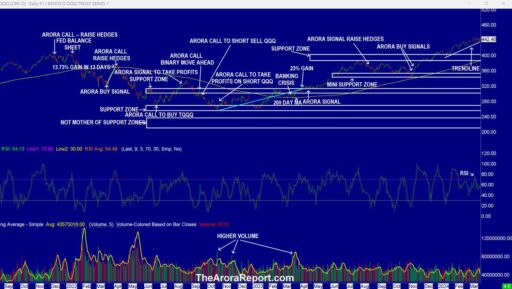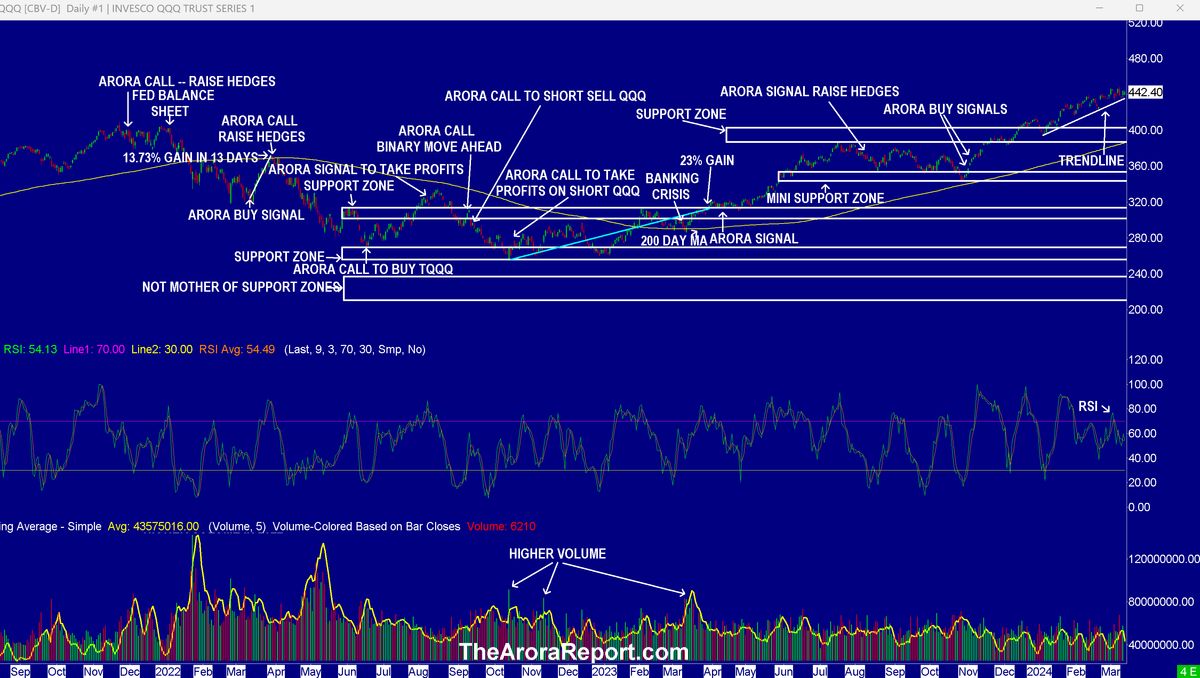In the dynamic world of stock trading, eBay stands out as an intriguing entity for investors and analysts alike. This comprehensive review delves into the multifaceted aspects of eBay’s stock, including technical analysis, financial health, investor sentiment, market position, and investment strategies. The aim is to equip potential investors with a thorough understanding of eBay’s market performance, drawing on a variety of indicators and expert insights.
Key Takeaways
- eBay’s stock shows strong bullish trends with its share price above key moving averages and a 27.91% increase over the last 52 weeks.
- Financial forecasts suggest an increase in eBay’s earnings per share in the upcoming quarters, signaling potential revenue growth.
- Analyst ratings recommend eBay as a ‘Buy’ with a stock score that infers lower risk than normal and a fair value assessment.
- Historical data indicates that eBay’s stock has a 60% accuracy rate for rising in the subsequent 52-week period.
- Investors have various strategies to consider, from short-term predictions to long-term growth prospects, when investing in eBay’s stock.
Technical Analysis of eBay Stock

Understanding the Significance of Moving Averages
Moving averages are pivotal in technical analysis, providing insights into eBay’s stock momentum and trend direction. They smooth out price data to create a single flowing line, which makes it easier to identify the trend of a stock.
- Short-term moving averages can signal quicker shifts in stock sentiment, while long-term averages offer a view of the enduring trend.
- The crossover of moving averages is a significant event that technical traders watch for signs of a potential trend reversal.
- Support and resistance levels are often associated with moving averages, acting as barriers to the stock’s price movement.
Moving averages do not predict price movements but are used as a tool to identify the strength and direction of a trend. They are most effective in markets with a clear direction, either up or down.
Understanding how to interpret moving averages in the context of eBay’s historical performance is essential for investors looking to gauge future price movements. By analyzing the interaction between different moving averages and eBay’s stock price, investors can make more informed decisions about entry and exit points.
eBay’s Stock Performance in the Last 52 Weeks
Over the past year, eBay’s stock has demonstrated a notable performance trajectory. Historically, eBay has risen by an average of 15.8% over the next 52 weeks, based on a 25-year track record. This trend has been consistent in 15 out of those 25 years, indicating a historical accuracy of 60%. The stock’s journey over the last year can be summarized with key data points:
| Date Range | Price | Market Cap | Beta |
|---|---|---|---|
| 52 Week | 37.17 – 52.82 | $27.04B | 0.84 |
The current share price hovers around $52.20, reflecting the stock’s resilience and investor confidence. With a market capitalization of $27.04 billion and a beta of 0.84, eBay presents itself as a stable investment with less volatility compared to the broader market.
The stock’s performance is not just a reflection of past trends but also a beacon for potential future growth. Investors are keenly observing eBay’s market movements to gauge the right moment for entry or exit.
Current eBay Stock Trends and Predictions
eBay’s stock trajectory has been a subject of analysis for investors and market watchers alike. The current trend is considered strongly bullish, with the stock price being above its 5, 20, and 50 day exponential moving averages. This indicates a positive momentum, although there is slight selling pressure. The stock’s performance over the past year has shown a significant change of 27.91%, reflecting investor confidence and market growth.
eBay’s stock forecast suggests variability based on different timelines. Short-term predictions for the coming days and weeks may show divergence from the long-term outlook for the following months and year.
According to historical data, eBay has on average risen by 15.8% over the next 52 weeks based on the past 25 years. This historical trend suggests a potential continued upward movement for the stock. However, it’s important to note that past performance is not always indicative of future results. The stock’s fair value and market conditions will play a crucial role in its future performance.
Analysts have provided price target predictions for eBay, with a consensus that reflects optimism. The following table summarizes the latest analyst predictions:
| Analyst Consensus | 12-Month Price Target | Historical Accuracy |
|---|---|---|
| Buy | Varies | 60% |
Investors should consider these predictions with caution, as market dynamics are subject to change, and predictions do not guarantee performance.
eBay’s Financial Health and Earnings Reports
Analyzing eBay’s Quarterly Earnings
eBay’s financial performance is a critical indicator of its market position and future potential. The company’s quarterly earnings reports provide valuable insights into its operational success and strategic direction. In the most recent quarter, eBay Inc. reported a revenue of $2.6 billion, marking a 2% increase on an as-reported basis and a 3% increase on an FX-Neutral basis.
Analysts have projected an optimistic outlook for eBay’s earnings, anticipating an increase of $0.12 per share this quarter. The following quarters also show promising forecasts, with a $0.17 per share increase expected next quarter, and a significant $0.47 per share increase projected for the entire year. Looking further ahead, next year’s earnings per share are estimated to rise by $0.32.
eBay’s consistent revenue growth and strategic divestitures, such as the spinoff of PayPal and sales of StubHub and Classifieds businesses, reflect the company’s adaptability and focus on core marketplace operations.
The table below summarizes eBay’s historical quarterly earnings per share and the anticipated growth:
Revenue Growth and Future Projections
eBay’s revenue trajectory has been a focal point for investors seeking to gauge the company’s growth potential. Strong quarterly revenue growth is indicative of eBay’s ability to expand its market share and enhance its value proposition to both buyers and sellers.
| Metric | Value |
|---|---|
| Earnings Per Share (EPS) | 2.9 |
| Revenue Per Share | 55.783 |
| Quarterly Revenue Growth | 13.9% |
| Return On Assets | 4.65% |
Future projections for eBay’s revenue are optimistic, with analysts expecting continued growth driven by strategic initiatives and a robust e-commerce market. The company’s ability to innovate and adapt to consumer trends will be critical in sustaining this momentum.
eBay’s sustained revenue growth and strategic market positioning underscore its potential for long-term value creation.
eBay’s Economic Moat and Fair Value Assessment
The concept of an economic moat refers to the sustainable competitive advantage that a company possesses, which protects its long-term profits and market share from competitors. For eBay, this moat is built on its established brand, extensive user base, and the network effect of its online marketplace.
Fair value assessment is crucial in determining whether a stock is overvalued or undervalued. According to recent analyses, eBay’s fair value has been adjusted to reflect the impact of strategic decisions, such as the divestitures of PayPal, StubHub, and its Classifieds business. The fair value is calculated based on eBay’s earnings and growth rate, with the P/E ratio being compared to the growth rate to estimate the return over a default time horizon of five years.
eBay’s stock is currently perceived as overvalued, with an estimated return of -19%. This suggests that the stock price may be higher than the company’s intrinsic value, as determined by its earnings potential and growth prospects.
The table below summarizes eBay’s valuation metrics:
| Metric | Value |
|---|---|
| Fair Value | XX.XX |
| Current Price | Overvalued |
| Est. Return | -19% |
| Economic Moat | Significant |
| Stewardship | Commendable |
Investors should consider these factors when assessing eBay’s stock for potential investment, keeping in mind the company’s market position and the broader economic context.
Investor Sentiment and Stock Ratings

Analyst Ratings and Stock Recommendations
The consensus among market analysts reflects a cautious perspective on eBay’s stock. With a consensus rating score of 2.18, eBay is viewed less favorably compared to other companies in the Retail/Wholesale sector. This rating indicates a general hold position, suggesting that analysts are not unanimously convinced about the stock’s growth prospects in the near term.
While the average consensus rating for the retail sector might be more optimistic, eBay’s specific circumstances and market challenges are reflected in its lower score.
Investors often look to analyst ratings as a starting point for their own research. It’s important to consider these ratings in conjunction with other financial data and market analysis. Below is a summary of eBay’s current analyst ratings:
- Buy: 2
- Hold: 5
- Sell: 1
These ratings can be subject to change based on quarterly earnings reports, market trends, and company-specific news. Investors should keep abreast of any updates to these recommendations.
Historical Accuracy of eBay Stock Predictions
The historical performance of eBay stock offers insights into the reliability of past predictions. Historically, eBay has shown an average annual rise of 15.8% over the past 25 years. This trend suggests a generally positive outlook, but it’s important to note that past performance is not always indicative of future results.
When considering the historical accuracy of eBay’s stock predictions, it’s noteworthy that eBay’s stock has risen in 15 out of the past 25 years during the subsequent 52-week period. This equates to a historical accuracy rate of 60%, which can be a useful metric for investors evaluating the credibility of stock forecasts.
While historical data can guide future expectations, investors should combine this with current market analysis and trends to make informed decisions.
The table below summarizes eBay’s stock performance over the past 25 years:
| Year Range | Average Annual Rise | Historical Accuracy |
|---|---|---|
| Past 25 Years | 15.8% | 60% |
Is eBay Stock Currently Overvalued or Undervalued?
Determining whether eBay stock is overvalued or undervalued involves a multifaceted analysis, including historical performance, current market trends, and future projections. Historically, eBay has shown a tendency to rise, with an average increase of 15.8% over the next 52 weeks based on 25 years of data. This pattern has been consistent 60% of the time, suggesting a level of predictability in its stock behavior.
When considering the current eBay share price of $52.20, analysis tools such as the Score for EBAY indicate a figure of 59, which is 18% above its historic median score of 50. This suggests a lower-than-normal risk profile for the stock at present. However, other valuation methods, like the Fair Value estimate from Yahoo Finance, imply that eBay might be overvalued, with an estimated return of -19%.
The market’s perception of eBay’s value is nuanced, with different indicators providing contrasting insights. Investors should weigh these alongside eBay’s strategic position and future growth prospects.
The table below summarizes eBay’s current valuation metrics:
| Metric | Value |
|---|---|
| Current Share Price | $52.20 |
| Historical Accuracy | 60% |
| Score for EBAY | 59 |
| Estimated Fair Value | Overvalued |
| Estimated Return | -19% |
In conclusion, while some metrics suggest eBay is undervalued, others point to overvaluation. Investors must consider both historical data and current market conditions to make an informed decision.
Market Position and Competitive Analysis

eBay’s Place in the Internet Retail Industry
eBay, once a dominant force in the online marketplace, now contends with giants like Amazon, Walmart, and Target. eBay’s market share is projected to slightly decline to 2.9%, reflecting the intense competition within the industry. Despite this, eBay’s unique value proposition continues to attract a dedicated user base.
| Company | Expected Market Share (2024) |
|---|---|
| Amazon | 38.7% |
| Walmart | 8.8% |
| eBay | 2.9% |
| Target | 1.7% |
eBay’s ability to maintain relevance in the face of fierce competition is a testament to its adaptability and the loyalty of its users.
The company’s strategic decisions, such as the spinoff of PayPal and the sales of StubHub and its Classifieds business, have streamlined its focus on core marketplace operations. This focus is crucial as eBay strives to innovate and enhance the e-commerce experience for both buyers and sellers.
Impact of Strategic Business Decisions on Stock Value
eBay’s strategic business decisions have a profound impact on its stock value. Strategic moves, such as acquisitions or changes in policy, can significantly sway investor confidence and market perception. For instance, eBay’s decision to spin off PayPal in 2015 was a strategic move that reflected on its stock price, as it allowed eBay to focus on its core marketplace business.
- The Company’s investment objective and policy.
- Uncompetitive investment performance.
- Secular changes in investor demand.
These factors collectively influence the level at which eBay’s shares trade in relation to the underlying Net Asset Value. Skilled stock selection has been a key driver of returns, indicating that eBay’s strategic decisions are closely monitored by savvy investors.
The potential of eBay’s stock cannot be solely judged by its market value; it’s essential to consider the intrinsic value and how strategic decisions affect it.
The valuation information and eBay’s Business Strategy must be weighed carefully to understand the future value of eBay’s stock. The company’s ability to adapt and make strategic decisions in response to market conditions is crucial for maintaining its competitive edge and ensuring long-term shareholder value.
Comparative Analysis with Industry Peers
When evaluating eBay’s market position, a comparative analysis with industry peers is crucial to understand its competitiveness and investment potential. eBay’s valuation metrics, such as the EV/EBIT ratio, are often contrasted with those of similar companies to gauge relative value. For instance, eBay’s EV/EBIT ratio is significantly lower than the median for Consumer Cyclical stocks, indicating a potentially undervalued status in the market.
In terms of growth potential and financial health, eBay is analyzed alongside giants like Amazon. Metrics such as Return On Equity (ROE) are compared to ensure that eBay stands strong against its competitors. This peer comparison is not only about numbers but also involves qualitative assessments of management strategies, competitive edges, and market dynamics.
The market’s perception of eBay’s stock is shaped by both its quantitative financial metrics and the qualitative competitive factors that influence its standing among industry peers.
Understanding eBay’s position requires a multifaceted approach, including volatility analysis, profitability, and liquidity assessments. These analyses help investors identify opportunities and risks, providing a comprehensive view of eBay’s potential in a highly competitive landscape.
Strategies for Investing in eBay Stock

How to Buy eBay Stock Online
Purchasing eBay stock is a straightforward process that can be completed through an online brokerage account. Deciding where to buy eBay stock is the first step, as you will need access to the NASDAQ market where EBAY shares are traded. Here’s a simple guide to get you started:
- Choose a reputable online brokerage firm.
- Open and fund your brokerage account.
- Search for eBay’s ticker symbol (EBAY) on the platform.
- Decide on the number of shares you wish to purchase.
- Place your order for eBay stock.
Remember, investing in the stock market involves risks, and it’s important to do your research or consult with a financial advisor before making any investment decisions.
After your purchase, it’s advisable to keep track of your investment by setting up a watchlist and monitoring eBay’s stock performance regularly.
Short-Term vs Long-Term Investment Approaches
When considering investment in eBay stock, it’s crucial to distinguish between short-term and long-term strategies. Short-term investors often capitalize on quick market movements, aiming to profit from volatility. In contrast, long-term investors may focus on eBay’s potential for sustained growth, aligning with the company’s vision of delivering a real return over time.
- Short-term investment may involve frequent buying and selling, reacting to market trends and news events.
- Long-term investment typically requires patience, with a focus on company fundamentals, dividend growth, and a time horizon of five years or more.
Geopolitical and macro-economic uncertainty, as well as interest rate fluctuations, can significantly impact eBay’s stock price. While short-term market movements are inevitable, a diversified investment approach can help mitigate risks.
The table below presents a snapshot of eBay’s financial metrics that are pertinent to investment considerations:
| Metric | Short-Term Impact | Long-Term Impact |
|---|---|---|
| Net Working Capital | High | Moderate |
| Long Term Investments | Moderate | High |
| Net Invested Capital | Moderate | High |
Investors should assess their risk tolerance and investment goals when choosing between short-term and long-term investment in eBay stock. Diversification and a clear understanding of eBay’s market position are key to making informed decisions.
Risk Assessment for Potential eBay Investors
Investing in eBay stock, like any investment, comes with its own set of risks that should be carefully considered. Investors can consider the worst-case scenarios before making an investment, which is a prudent approach to understanding potential pitfalls.
When evaluating the risk profile for eBay, it’s important to note that the stock is currently trading in the 50-60% percentile range relative to its historical Stock Score levels, which infers lower risk than normal. However, this does not guarantee future performance, and investors should remain vigilant.
The fair value and economic moat of a company are critical factors in assessing risk. eBay has undergone significant changes in recent years, including the spinoff of PayPal and the sale of its StubHub and Classifieds businesses, which may have altered its risk landscape.
Here are some key risk factors to consider:
- Market volatility and economic downturns can affect eBay’s stock price.
- Changes in consumer behavior and competition in the online retail space.
- Regulatory changes and legal challenges that could impact operations.
- Technological advancements that may render eBay’s platform less competitive.
Conclusion
In summary, eBay’s stock performance presents a nuanced picture for potential investors. The company’s stock price has shown resilience, with a 27.91% increase over the past 52 weeks and a historical trend of rising by 15.8% on average annually. Technical analysis indicates a strong bullish trend, with the stock trading above its key moving averages. Analysts project earnings growth, which could bode well for future performance. However, the stock is currently considered slightly overvalued, suggesting that investors should approach with caution. With eBay’s significant changes, including the spinoff of PayPal and sales of StubHub and Classifieds, the company’s focus on its core marketplace could be a pivotal factor in its market performance. Investors are advised to keep an eye on eBay’s strategic moves and market position while considering the stock’s historical data and current analyst ratings.
Frequently Asked Questions
Is eBay stock public?
Yes, eBay is a publicly traded company, listed on the S&P500 under the ticker symbol EBAY.
What is the eBay stock quote today?
The eBay stock price is 52.20 USD today. However, stock prices fluctuate, so it’s important to check a reliable financial news source for the latest quote.
How can I buy eBay stock online?
You can purchase eBay shares by opening an account with a reputable brokerage firm such as TD Ameritrade or tastyworks.
Is eBay stock considered overvalued or undervalued?
Currently, eBay stock is trading at a level that infers lower risk than normal, with a Stock Score of 59, which is 18% above its historic median score of 50.
What are analysts’ predictions for eBay stock performance over the next year?
Analysts predict that eBay stock has historically risen by 15.8% on average over the next 52 weeks, based on 25 years of stock performance.
What is eBay’s current market capitalization and stock trend?
eBay’s current market capitalization is 27.04 billion USD, with the stock considered strongly bullish and experiencing slight selling pressure.





